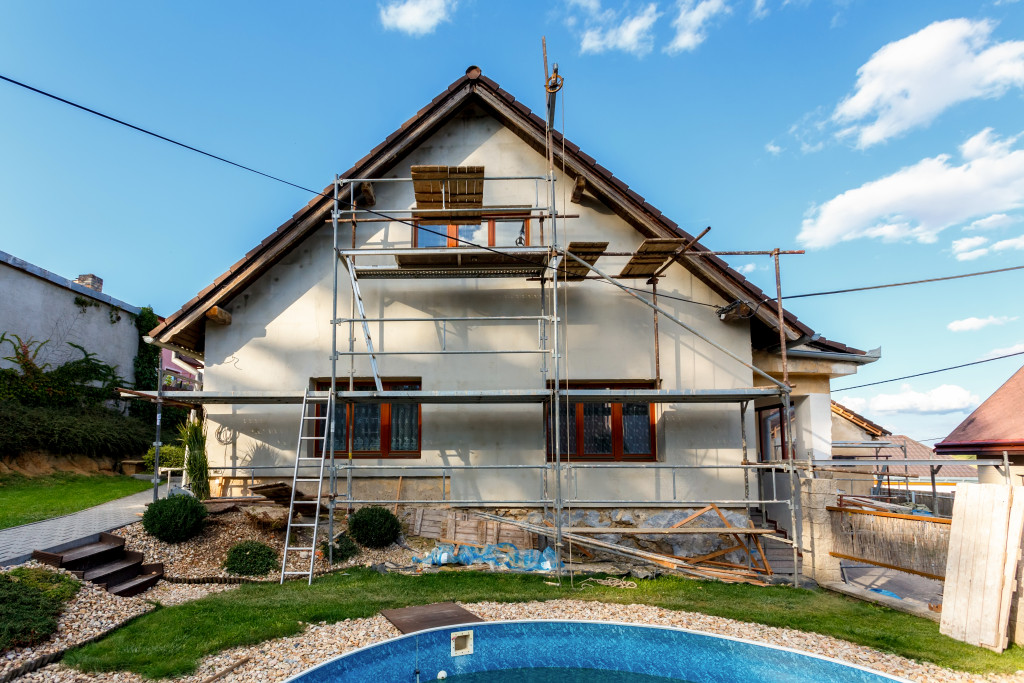- Upgrading insulation can significantly reduce heating costs and improve a home’s energy efficiency.
- Installing energy-efficient windows and choosing energy-rated appliances can decrease energy consumption in your home.
- Solar heating can effectively reduce energy costs and contribute to carbon emission reduction.
- Building a deep winter greenhouse can extend growing seasons, reduce heating costs, and support year-round fresh produce.
Climate change has led to an increase in colder weather patterns in some areas of the world, meaning that homeowners need to be vigilant about their homes’ energy consumption. As the winter months approach, you may be looking for ways to decrease your homes’ dependence on energy from fossil fuels and electricity.
Not only is using these sources bad for the environment, but these sources are also costly. Fortunately, you can make plenty of sustainable home improvements that can help you regulate the temperature in your home and reduce your energy costs.
Upgrade insulation
When it comes to keeping your heating costs low, you need to start by looking at your insulation. The primary function of insulation is to prevent the warm air from escaping. If your home is not adequately insulated, it will lead to higher heating bills.
Upgrading your home’s insulation system is a wise investment and could significantly reduce your energy bill by as much as 40%. Just make sure you choose the best insulation material for your home. Here are a few of the best options you should look into:
Fiberglass insulation
Fiberglass insulation is one of the most commonly used materials because it offers exceptional thermal performance and is affordable. It’s made of fine strands of glass that are spun together to create a thick layer of insulation.
Cellulose insulation
Cellulose insulation is made from recycled paper products like newspapers or cardboard boxes. It’s eco-friendly, has excellent thermal performance, and is affordable.
Spray foam insulation
Spray foam insulation is a bit expensive compared to the other two materials, but it offers superior insulating properties. It comes in two types – open-cell and closed-cell spray foam. Open-cell spray foam is an excellent option if you want to minimize air leaks, while closed-cell spray foam provides better protection against moisture.
Rock wool insulation
Rock wool insulation is made from mineral fibers and is an excellent choice for soundproofing. It’s more expensive than fiberglass insulation but provides better thermal resistance.
By upgrading your home’s insulation, you can significantly reduce your heating costs and also improve the energy efficiency of your home.
Install Energy-Efficient Windows

Energy-efficient windows play a crucial role in keeping your home warm during long winters. These windows are designed to keep heat inside, making your home more energy-efficient. You can install windows with double glazing, Low-E glass, or argon-filled space. These types of windows can reduce energy consumption by up to 25%.
Switch to Solar Heating
Solar heating is becoming increasingly popular among homeowners looking to cut down on their energy costs. This type of heating works by using energy from the sun to heat water for your home’s heating and hot water system. Solar heating can help you save money in the long run, and its installation is part of the government’s initiative to cut down on carbon emissions.
Choose Energy-Efficient Appliances

Energy-efficient appliances can help reduce energy consumption, and they also help keep your home running efficiently. When buying appliances such as washing machines, dishwashers, and fridges, look for models with an energy rating of A++ and above. These appliances use between 20-40% less energy than standard appliances.
Build a Deep Winter Greenhouse
A deep winter greenhouse is a structure designed to provide extended, unheated growing capability in cold climates. It works by capturing solar energy through the south-facing glazing and storing it in the thermal mass. This type of greenhouse can extend your growing season, reduce heating costs, and allow you to grow fresh produce during the winter months.
Just make sure you employ the help of professional contractors who specialize in building deep winter greenhouses. They will ensure your greenhouse is properly designed and built to withstand harsh winter conditions.
You can employ many sustainable home improvements to weather the cold months while minimizing your reliance on energy produced from fossil fuels. From upgrading insulation and installing energy-efficient windows to switching to solar heating, choosing energy-efficient appliances, and building a deep winter greenhouse, these strategies help lower your energy costs and contribute to a healthier environment.
However, remember that each home is unique, and what may work for one might not be as effective for another. Therefore, assessing your home’s specific needs and considering professional advice before making any significant changes is crucial. With careful planning and execution, you can make your home a cozy, sustainable haven throughout winter.



